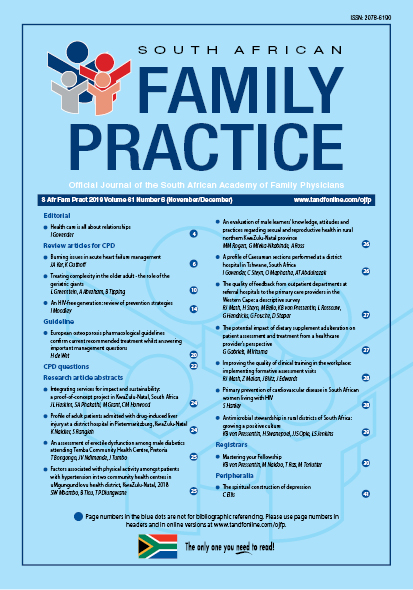A profile of Caesarean sections performed at a district hospital in Tshwane, South Africa
Abstract
Introduction: Caesarean section (CS) is a common obstetric procedure that prevents neonatal and maternal death when performed correctly if indicated; however, CS can give rise to complications that lead to maternal and perinatal morbidity and mortality. Rates of CS are increasing worldwide, although the World Health Organization (WHO) has indicated an ideal rate of 5–15%. South African CS rates are higher than the ideal.
Methods: Maternity records of 2015 were reviewed at Odi District Hospital (ODH) to assess whether ODH complies with the ideal CS rate. In this study, extracted data include date and time of CS, maternal age, parity, gestational age, total number of previous CSs, elective or emergency, indications, anaesthesia used and registration of the surgeon.
Results: There were 3 336 deliveries and 1 064 CSs (32%). The majority of women were aged from 19 to 34 years (59%), 72.8% were multiparous and 54% between 37–39 weeks’ gestation. The most common (40.1%) overall and emergency indication was foetal distress. Most CSs were emergencies (61.70%). Most elective CSs were because of a previous CS and spinal anaesthesia was used in 91.73%. Medical officers performed most of the CSs (79.0%) during working hours. The CS rate of 32% was significantly higher than the ideal 5–15% and higher than in other sub-Saharan countries with similar maternal characteristics. Indications for emergency and elective CSs were similar to previous research.
Conclusion: The Caesarean section rate at ODH is higher than the recommended rate. Potential CSs therefore need to be evaluated more intensely to assess the true need for surgical intervention.
The full article is available at https://doi.org/10.1080/20786190.2019.1671655

